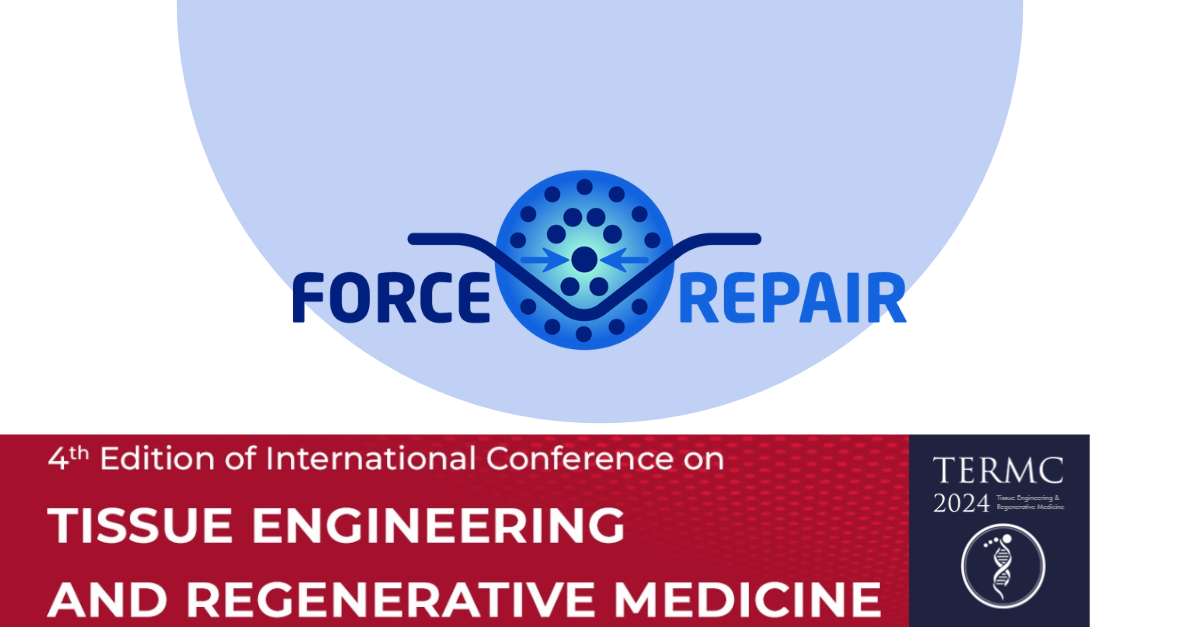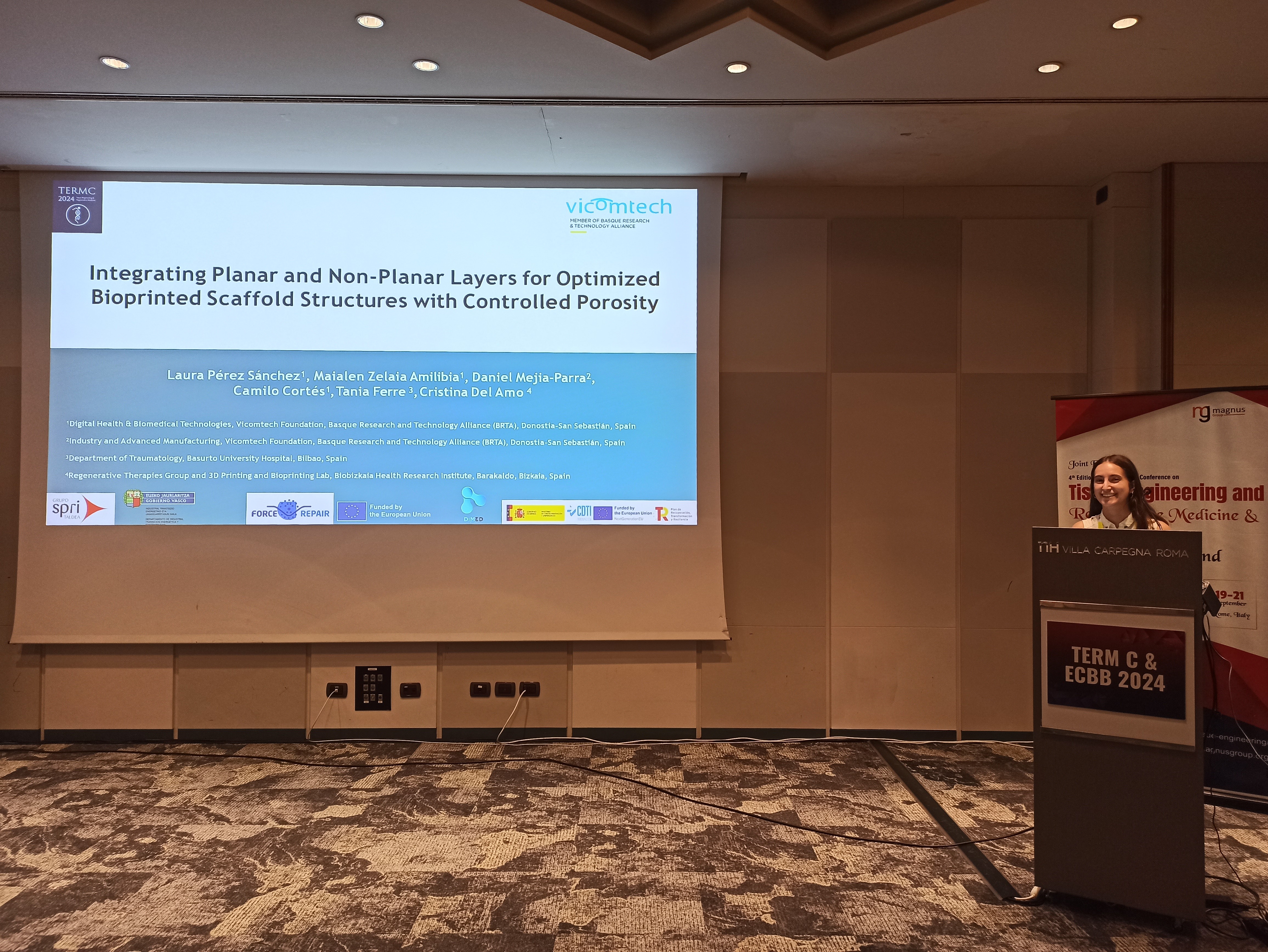Laura Pérez Sánchez (Vicomtech) presented methodology, “Integrating Planar and Non-Planar Layers for Optimized Bioprinted Scaffold Structures with Controlled Porosity” at TERMC 2024
Rome, Italy – FORCE REPAIR partner Vicomtech attended the annual TERMC meeting from September 19 - 21, 2024.
The 4th Edition of the International Conference on Tissue Engineering and Regenerative Medicine organized by Magnus Group, united scientists, researchers, clinicians, and industry experts to explore cutting-edge solutions for tissue repair, regeneration, and advancements in regenerative medicine. Focused on the theme "From Cells to Solutions: Advancements in Tissue Engineering and Regenerative Therapies," the conference provided a comprehensive platform for presenting the latest breakthroughs and exchanging knowledge in the field.

One of the scientists presenting recent advancements in tissue repair and regeneration was Laura Pérez Sánchez from Vicomtech. On September 19th, she delivered an oral presentation showcasing a novel method developed in collaboration with her colleagues: Maialen Zelaia Amilibia (Vicomtech), Daniel Mejia-Parra (Vicomtech), Camilo Cortés (Vicomtech), Tania Ferre (Basurto University Hospital), Cristina Del Amo (Biobizkaia Health Research Institute). This innovative approach focuses on generating non-planar layers capable of optimizing scaffold structures with a controlled internal porosity in lesions.
The presentation, titled “Integrating Planar and Non-Planar Layers for Optimized Bioprinted Scaffold Structures with Controlled Porosity”, outlined a methodology based on the planar and non-planar layers integration to ensure a smoother implant finish while maintaining an adequate internal structure with controlled porosity. This methodology enables effective transmission of oxygen and nutrients, promoting cell proliferation and enhancing tissue regeneration.
Key take away notes from the research are:
- This approach gives new insights into the development of non-planar bioprinting methodologies.
- This work achieves reducing the stair-step effect and improving mechanical properties of models while preserving an adequate scaffold configuration for the targeted application.
- Vicomtech research could be used as a starting point to develop an extensive quantitative evaluation when developing non-planar bioprinting algorithms.

Learn more about the approach from the abstract here.
If you would like to learn more about Vicomtech visit their website.
